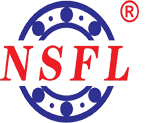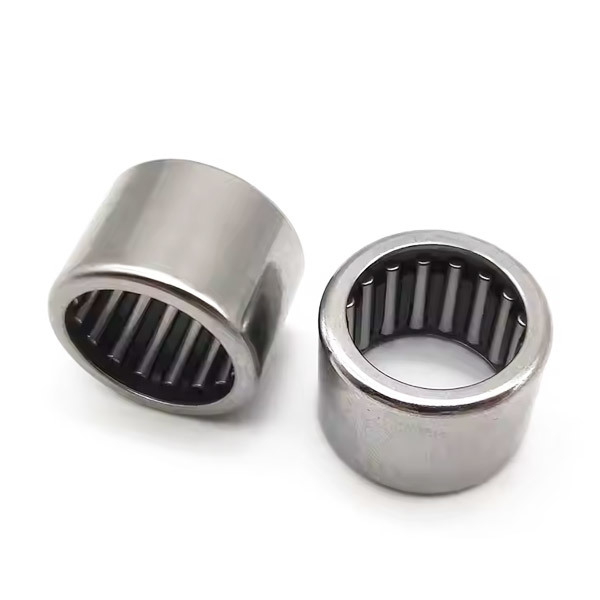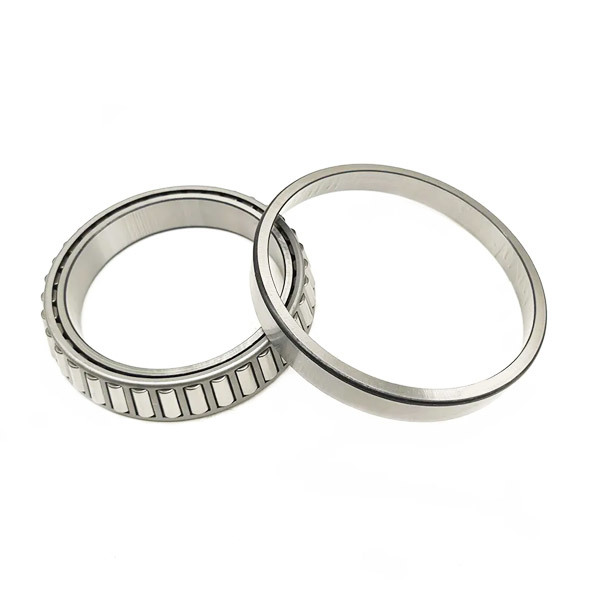03
2025
-
10
Needle Roller Bearings vs. Traditional Bearings: Which is Better?
Needle Roller Bearings vs. Traditional Bearings: Which is Better? Introduction to Bearings in Industrial Equipment Bearings play a crucial role in the functionality and efficiency of industrial machinery. By reducing friction between moving parts, they enable smooth operations and enhance the overall performance of various equipment. Among the multitude of bearing types available, **needle roller
Needle Roller Bearings vs. Traditional Bearings: Which is Better?
Introduction to Bearings in Industrial Equipment
Bearings play a crucial role in the functionality and efficiency of industrial machinery. By reducing friction between moving parts, they enable smooth operations and enhance the overall performance of various equipment. Among the multitude of bearing types available, **needle roller bearings** and **traditional bearings** stand out due to their unique features and specific applications. In this article, we will thoroughly analyze both types, helping you determine which option suits your needs best.
Understanding Needle Roller Bearings
Needle roller bearings are a specialized type of rolling-element bearing that utilizes long, slender rollers—often resembling needles—to support radial loads. Their design allows for a smaller cross-section, making them ideal for applications where space is at a premium.
Key Features of Needle Roller Bearings
- **Compact Design:** Due to their elongated rollers, needle roller bearings can support heavy loads without occupying much space.
- **High Load Capacity:** They possess a remarkable ability to handle radial loads, making them suitable for various industrial applications.
- **Low Friction:** The design of needle rollers minimizes friction, contributing to smoother operation and increased efficiency.
- **Versatility:** They are available in various configurations, including drawn cup, cage, and thrust types, providing versatility for different applications.
Common Applications of Needle Roller Bearings
Needle roller bearings find applications in diverse industries, including:
- Automotive components such as transmissions and differential gears.
- Construction machinery where space is limited.
- Electrical motors and pumps for enhanced efficiency.
- Agricultural equipment for increased durability in harsh environments.
Exploring Traditional Bearings
Traditional bearings, often categorized as ball bearings or roller bearings, utilize spherical or cylindrical rollers for load support. They are widely used across numerous applications due to their proven reliability and performance.
Key Features of Traditional Bearings
- **Robustness:** Traditional bearings are built to last, offering durability and reliability in various conditions.
- **Wide Availability:** They come in a vast range of sizes and configurations, making them easy to source and replace.
- **Versatile Applications:** Suitable for both radial and thrust loads, traditional bearings can be used in numerous environments, from light-duty applications to heavy machinery.
Common Applications of Traditional Bearings
Traditional bearings can be found in:
- Household appliances such as washing machines and refrigerators.
- Industrial machinery, including conveyors and hydraulic systems.
- Aerospace components where precision and reliability are paramount.
- Electric motors for consistent performance and longevity.
Comparative Analysis: Needle Roller Bearings vs. Traditional Bearings
To determine which bearing type is better suited for specific applications, we must compare them based on several crucial factors.
1. Load Capacity
Needle roller bearings generally have a higher load capacity for their size, making them advantageous in space-constrained applications. However, traditional bearings can support both radial and axial loads, making them versatile for varied applications.
2. Size and Weight
Needle roller bearings win in the compactness category, providing a lightweight option that does not compromise on performance. Traditional bearings, while larger, have their own advantages in durability and load distribution.
3. Friction and Efficiency
Needle roller bearings typically exhibit lower friction due to their design, leading to improved efficiency in machinery. Traditional bearings, while efficient, may experience more friction, especially under heavy loads.
4. Versatility and Applications
While needle roller bearings excel in applications where space is limited, traditional bearings are more versatile across various industries and equipment types.
5. Maintenance and Longevity
Traditional bearings often require more maintenance due to their design and materials, while needle roller bearings, when properly lubricated, can provide extended service life with minimal upkeep.
Pros and Cons of Needle Roller Bearings
Advantages
- Space-saving design
- High load capacity
- Low friction for enhanced efficiency
- Versatile configurations
Disadvantages
- Limited axial load capacity
- May require specific housing designs for optimal performance
Pros and Cons of Traditional Bearings
Advantages
- Proven reliability and robustness
- Wide availability and easy replacement
- Suitable for various loads and conditions
Disadvantages
- Heavier and bulkier than needle roller bearings
- Potentially higher friction leading to decreased efficiency
Making the Right Choice for Your Application
When deciding between needle roller bearings and traditional bearings, consider the following:
1. Application Requirements
Assess the specific demands of your machinery. If space is limited and you require high load capacity, needle roller bearings may be the ideal choice. Conversely, if your application demands versatility and reliability, traditional bearings could be more appropriate.
2. Environmental Conditions
Consider the operating environment of your equipment. Harsh conditions may require the robustness of traditional bearings, while clean and compact spaces favor needle roller designs.
3. Maintenance and Lifespan
Evaluate your maintenance capabilities and the expected lifespan of the bearings. If you prefer low-maintenance options, needle roller bearings could be advantageous.
Frequently Asked Questions (FAQs)
1. What are the primary differences between needle roller bearings and traditional bearings?
Needle roller bearings are compact and designed for high load capacity, while traditional bearings provide versatility across various applications and are generally more robust.
2. Can needle roller bearings handle axial loads?
Needle roller bearings can handle some axial loads, but they are primarily designed for radial loads. For applications requiring significant axial support, traditional bearings may be more suitable.
3. How do I determine the right bearing for my application?
Consider factors such as load capacity, space constraints, environmental conditions, and maintenance requirements to make an informed decision.
4. Are needle roller bearings more efficient than traditional bearings?
Yes, needle roller bearings typically exhibit lower friction, leading to enhanced efficiency compared to traditional bearings.
5. What maintenance practices are recommended for needle roller and traditional bearings?
Regular lubrication, proper alignment, and routine inspections are essential for both types of bearings to ensure optimal performance and longevity.
Conclusion
Choosing between needle roller bearings and traditional bearings ultimately depends on your specific application needs and constraints. Needle roller bearings offer compactness and efficiency, making them ideal for space-restricted environments and high load scenarios. In contrast, traditional bearings provide robustness and versatility, suitable for a broader range of applications. By carefully considering your requirements and understanding the unique advantages and limitations of each bearing type, you can make an informed decision that enhances the performance and longevity of your machinery.
RELATED BLOGS
10% DISCOUNT FOR NEW CUSTOMERS

WhatsApp:+8613211157555
Tel: +8613211157555
Address:Room 1106, 11th Floor, No. 23, Fengshan West Road, Jinbang Community, Daliang Street, Shunde District, Foshan City, Guangdong Province
Copyright 2025 Schaeffler (Guangdong) Transmission Technology Co., Ltd. SEO Business license




